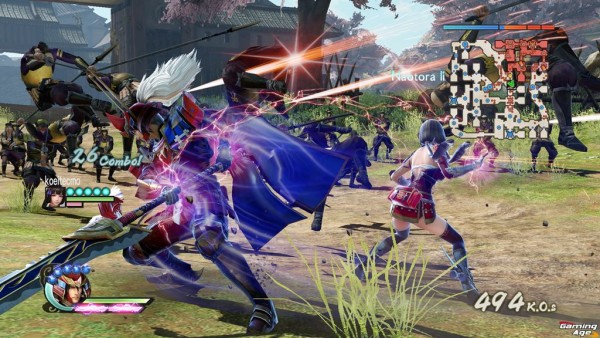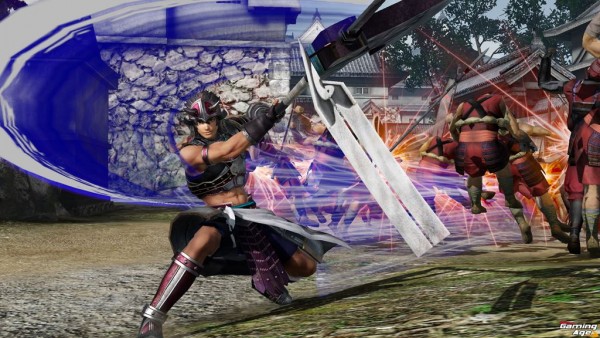Also On: PS4, PS3, PC
Publisher: Koei Tecmo
Developer: Omega Force
Medium: Digital/Vita Card
Players: 1-2
Online: Yes
ESRB: T
I honestly have no idea what the difference is between Samurai Warriors 4 and Samurai Warriors 4-II. Yes, I know that “Naomasa Ii appears as a playable character for the first time, and the various personalities of the age are explored in more depth in ‘Story Mode’, which is now focused on individual characters.” But if you were to ask me what that means in practice, I’d be at a loss for words — and I say that as someone who played (and enjoyed!) Samurai Warriors 4.
I do, however, know this: Samurai Warriors 4 on the Vita was okay. As I said, I liked it, but it had issues. Pop-in was a major problem, as was draw distance. It was always plainly obvious that you were playing a game designed for a console that had been shrunk down to fit on a handheld. Samurai Warriors Chronicles 3, by contrast, worked really well on the Vita because it was built for a smaller system; none of the issues that plagued the shrunken console version were present there.
Samurai Warriors 4-II feels much more like Samurai Warriors Chronicles 3 than it does Samurai Warriors 4, as far as I’m concerned.
That’s not to say that some of the same problems don’t exist. You still have a much more limited field of view, and a lot of the time you’re running at enemies that the map tells you are there, even if you can’t see them in front of you.
Nonetheless, everything feels and looks smoother here. The enemies stay on the screen once they arrive on the screen, which means you get the full Warriors experience of slicing and dicing your way through dozens upon dozens of enemies. For a game where that’s pretty much all you do from beginning to end, that’s a pretty important step forward.
It helps, too, that the cutscenes look gorgeous. I can’t say that I’m able to follow the story being told by Samurai Warriors 4-II at all, since it all feels like a big historical soap opera to me, but I can say that it at least looks really, really impressive as it’s telling you its stories.
I realize that this is a pretty superficial read on the game, but I’ve made peace with the fact that I’m never going to be able to tell most of the Warriors games apart. I’m probably missing out on several layers of depth, but I feel like if you’ve hacked and slashed your way through tens of thousands of feudal-era Japanese samurai once, you’ve done it countless times. What it all boils down to now, as far as I’m concerned, is performance — how efficiently does the game allow me to dispatch those untold number of Warriors? And on that score, Samurai Warriors 4-II simply delivers.



